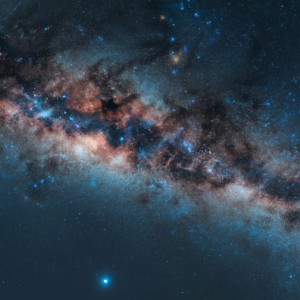The existence of the universe is a fascinating and complex topic. The universe is vast and contains everything from planets and stars to galaxies and beyond. There are several ways in which cosmologists and scientists understand the existence of the universe. In this article, we will explore some of the different ways in which the universe can be understood and described.
Big Bang Theory

One of the most widely accepted explanations for the existence of the universe is the Big Bang theory. This theory proposes that the universe began as a singularity, a point of infinitely dense and infinitely hot matter. Around 13.8 billion years ago, this singularity rapidly expanded, and the universe as we know it came into being.
The Big Bang theory has been supported by numerous pieces of observational evidence, such as the cosmic microwave background radiation, the abundance of elements in the universe, and the large-scale structure of the universe. While the Big Bang theory is not without its critics, it is currently the most widely accepted explanation for the origin of the universe.
Steady State Theory
Another theory that was popular in the mid-twentieth century is the steady-state theory. This theory postulates that the universe has always existed and will continue to exist indefinitely. According to this theory, new matter is continuously created in the universe to maintain a constant density.
Steady-state theory was eventually eclipsed by the Big Bang theory due to a lack of observational evidence. However, some scientists have recently revisited the concept of a steady-state universe, proposing that it might better explain some puzzling cosmological issues such as dark matter.
Multiverse Theory
Multiverse theory is perhaps the most radical and speculative explanation of the existence of the universe. The multiverse proposes the existence of an infinite number of universes besides our own, each with its unique physical laws, constants, and initial conditions.
The multiverse theory stems from the fact that our universe appears to be fine-tuned for life. Slight alterations to fundamental physical constants like the gravitational constant, the electromagnetic force, or the strong and weak nuclear forces would have resulted in a very different universe in which life could not exist. To explain this, some scientists propose that there are an infinite number of universes, each with different values of these fundamental constants. We happen to exist in one of the universes where they are compatible with life.
String Theory
String theory is another speculative explanation for the existence of the universe. It proposes that all matter and energy in the universe are composed of tiny, one-dimensional strings vibrating at different frequencies. String theory provides a framework to unify quantum mechanics and general relativity, two fundamental theories in physics that have yet to be reconciled.
While string theory is still in its infancy, some scientists suggest that it may one day be able to explain the origin of the universe. According to some models, the universe may have begun as a vacuum state, which then underwent a phase transition, leading to the formation of the universe as we know it.
Conclusion
The existence of the universe is a complex and fascinating topic. While various theories and models have been put forward to explain the universe, there is no consensus yet on how exactly it came into being. Some of these models are speculative and unproven, while others have been supported by observational evidence. Understanding the origin and nature of the universe remains one of the most challenging problems in modern science today.













评论